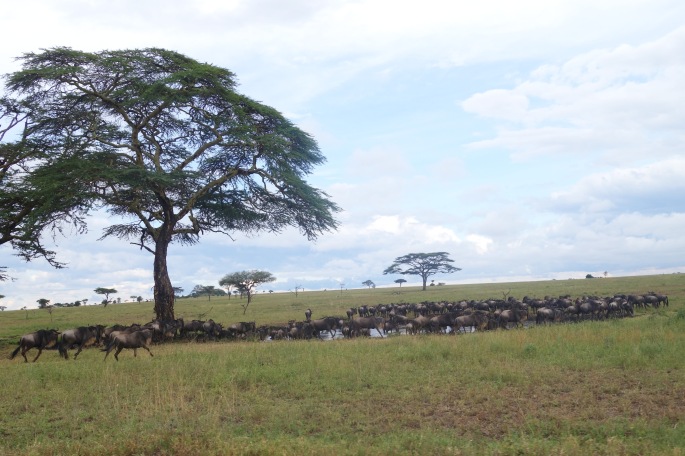The wildebeest are famous for their epic migrations from the Maasai Mara in Kenya into the Serengeti in Tanzania. The migration had started while we were there and we saw 10,000 plus wildebeest at times: sometimes as far as the eye could see! There are an estimated 1.5 million that follow the rains with each migration and this produces new grass growth for food and a source of drinking water. However, other animals are part of this great migration including 200,000 zebra and 500,000 Thompson’s gazelle. The zebra and wildebeest are commonly found in mixed groups.



Wildebeest, also known as gnus, are interesting looking. They are a type of antelope but their body proportions seem odd compared to other antelope.


Zebras look like a horse with black and white stripes and each pattern is unique to that zebra similar to a fingerprint. Although the reason for the pattern is unknown most believe that in relates to camouflage against predators, helps with temperature control and repels insects.



This group of wildebeest interrupted their migration for a quick drink. They are a bit skittish during these times as they are vulnerable to lions when they put their heads down to drink. However, the need to drink outweighs their fear.



Many of the zebra had small foals with them. We noticed that many were still nursing from their mothers. The younger the foals, the more brown they have in their coats.



